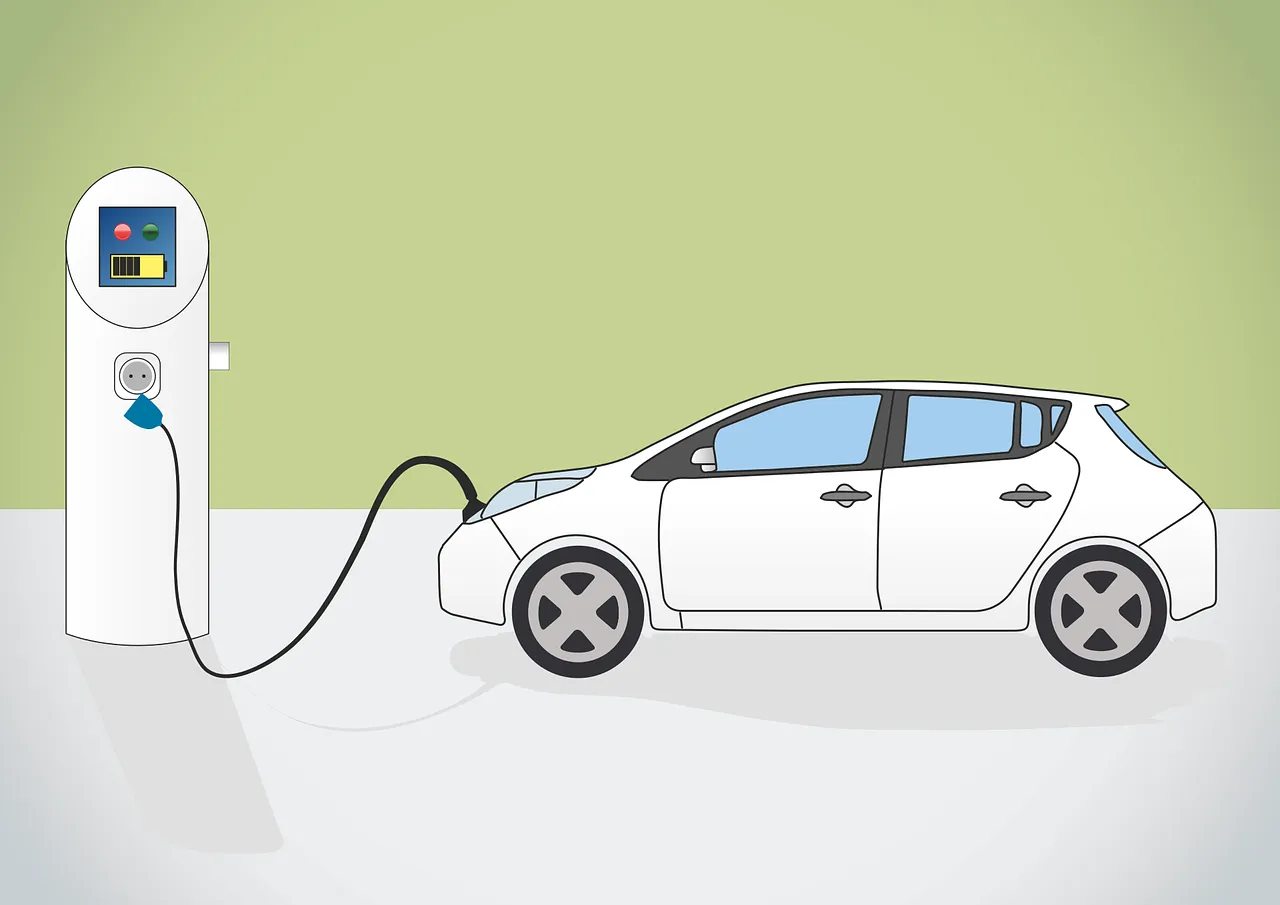Beyond GPS: Exploring Advanced Telematics Solutions for Modern Fleets
![]()
Advanced telematics is becoming a trend now and it isn’t only about traditional GPS tracking, but offers many features for optimizing your fleet management. Short put, it is becoming a game-changer for the automotive industry.
The advanced systems it provides have revolutionized tracking, managing, and monitoring our vehicles. In fact, the Telematics market size is expected to grow to $70 billion by 2028.
Well, that’s not it, we will dive deeper into this article to learn more about how advanced telematics systems are changing modern fleets.
Exploring your fleet budget
Fleet budgets are a powerful tool for helping you stand out from the rest in the future and where your operations stand. You may be wondering how you can create the ideal fleet budget strategy? Well, here’s a short guide to building a fleet budget:
- Set your goals
- Look at data to determine your cost assumptions
- Estimate your operational costs
- Track and measure every moving part of your operations through fleet and asset management software
You can’t dive deeper into using more advanced technologies for your fleet if you don’t know what your budget is. Therefore, it’s important to set up before you go any further.
Real-time vehicle tracking
Real-time vehicle tracking for modern fleets is revolutionary and a good advantage. This mostly benefits businesses that are focused on the efficient movement of people and commodities.
Real-time tracking allows fleet managers to monitor the speed, location, and conditions of their vehicles by using telematics devices and a GPS tracking system. These practices improve fuel efficiency, driving habits, and overall fleet performance.
There are numerous other benefits that real-time vehicle tracking offers:
- Efficiency: Real-time vehicle tracking improves route planning, vehicle maintenance and allows fleet managers to check performance data. In the long-term companies save costs, and increase driver productivity by focusing on more efficient routes.
- Increased driver safety: Fleet operators can keep a close eye on risky driving habits that include sudden start-stops, abnormal braking, speeding, and more. This type of data allows managers to closely monitor a driver’s driving habits and restrict them when necessary.
- Improved asset management: Asset management is conducted by allowing fleet managers to access data on each vehicle’s location and performance level.
- Reduced costs: By reducing fuel consumption, increasing asset management, re-routing, and more, fleet managers can find the most economical routes for their vehicles by using real-time data, reducing the wear and tear of vehicles and optimizing fuel costs.
The whole point here is to increase the lifespan of the vehicle, and real-time tracking significantly contributes to this.
Advanced battery analytics

Many modern-day vehicles are starting to become electric. In fact, it’s predicted that by 2040, most cars you’ll purchase will be electric. What does this mean? Modern-day fleets are heading in this direction and it’s more important than ever to prolong battery lifespan when using an electric vehicle (EV).
In this case, battery analytics will do the trick since they give you a complete overview of how your battery is performing and what is accelerating its wear and tear. However, it’s always important to use the right software when trying to view battery analytics. You need to find software that can integrate with advanced telematics to help you have the perfect battery analytics overview.
Elysia Battery Analytics can integrate with an advanced telematic system to provide you with real-time monitoring of the performance and health status of your EVs battery. This includes tracking important features like:
- Battery charging status
- How environmental factors impact the life of the battery
- Current battery health and if it needs replacement or not
Advanced battery analytics can easily integrate with larger fleet management systems, giving you a close overview of electric vehicles. This integration promotes fleet optimization, considering specific needs and all challenges EVs face when driving.
Integrations with E-commerce platforms
Using e-commerce platforms and integrating them with telematics allows you to focus more on maintenance alerts, analyzing driver behavior, and using real-time tracking capabilities.
E-commerce platforms will back you up when you need to order parts for your vehicles during maintenance. Being a long-time customer might even grant you the advantage of getting discounts for parts you order.
Using ecommerce software for automotive businesses also offers supply chain visibility by allowing you to integrate with telematics data. Moreover, there is software that grants you customer relationship management (CRM) functionalities. Through these functionalities, you can manage customer interactions, track sales, and improve customer services.
Furthermore, you can integrate with Enterprise Resource Planning (ERP) systems that connect telematics data with inventory management, finance, and many other functions.
Integration with Internet of Things (IoT) sensors
The Internet of Things (IoT) acts as a main point of connection for tracking devices, and the data they generate every day. The trending adoption of 5G benefits IoT even more in numerous industries and increases the usage of automation.
IoT connections data volume is expected to grow to 79.4 Zettabytes by 2025. Many industries have evolved to a point where any asset or tool can be connected via IoT devices, capturing data, interpreting it, and putting it into action.
IoT connectivity allows you to collect data across all fleets. It can integrate with a fleet management platform quickly and efficiently by sorting out the required data. This gives you insights about engine status, the driver’s location, their behavior, and the vehicle’s maintenance history.
Connecting IoT and fleet management software allows service providers and fleet operations to follow a predictive analysis structure. This gives you enough power to gain an advantage over competitors in the following operational areas:
- Improved maintenance: Integrated IoT sensors will provide you with relevant data that is related to the vehicle’s health status and performance. This means that fleet managers can rapidly detect if a vehicle has any issues because of prolonged maintenance services.
- Streamlined service calls: IoT sensors can signal service calls when required. This helps reduce service costs with improved accuracy and customer service.
- Vehicle tracking and re-routing: Knowing vehicle locations at all times improves vehicle efficiency. Fleet managers can send signals to the nearest trucks, being informed of vehicle delays and suggesting the best routes for arriving at destination points on time.
For IoT applications to help you, you need to make sure your organization has adequate fleet management technology in place. It’s all about finding a solution that can support the demand data-derived insights provide you and collect data as effectively as possible.
Electronic Logging Devices (ELD)
An ELD is a component specially designed to automatically log driving time into vehicles. Many countries like the USA and Canada require you to be fitted with ELDs that comply with safety road regulations. This means that all drivers should move away from paper log books that are prone to human error.
ELDS are great for allowing you to stay compliant and ensure that drivers have the appropriate work and rest schedule to avoid road fatigue.
Also, keep in mind that all ELDs are different between countries. For instance, the United States, requires Commer Motor Vehicles (CMVs) to comply, including both trucks and buses. However, federally regulated CMVs in Canada are required to comply, including all of those that cross international borders.
Geofencing and alerts

In modern days, telematics devices are widely used among fleets of all industries and sizes. Out of all these fleets, only some of them are into geofencing. What exactly is geofencing?
Geofencing is a practice of RFID technology that gives you real-world locations. The term itself refers to boundaries that are used by fleet tracking software to know if the driver stays within them or not.
Fleets use geofencing to automatically log when their telematics-equipped vehicles either arrive or leave their properties, job sites, and other visited locations. This automation is what differentiates geofencing-based vehicle tracking from basic forms of GPS monitoring that fleets use.
You may wonder how geofencing is benefiting fleets. Here is what they deliver to you:
- Prevention of misuse: Some drivers might cross boundaries and go to unauthorized locations. This can lead to assets being threatened and misused. Fortunately, geofencing provides ways the organization can keep an eye on its assets 24/7. This reduces lost items and liability risks.
- Improved safety: Fleet telematics gives managers the power to learn how drivers behave when nobody is around to see them on the road. Geofencing can overlook if the driver is exceeding speed limits, and if they are engaging in dangerous driving habits. This way, fleet managers know when to intervene.
- Accurate timesheets and project hours: It is great for streamlining the payroll process. Paper timesheets can easily be damaged and lost, but geofencing allows you to see where the worker was and at which time. This clarity allows finance teams to get rid of all the headaches they have dealing with paperwork and insecurities.
Overall, geofencing is great for helping you stay relaxed. What better than to not worry and easily be informed if something wrong does happen? Telematics devices have come a long way!
Modern fleets are changing for the good
Advanced telematics solutions are doing a great job in changing the way fleet managers manage their fleets. The driver might be in danger, crossing boundaries they shouldn’t, speeding, or any other incident, and what is better than to know all of this? Modern technology has allowed it to happen.
Not only that, but you are also getting more information on fleet maintenance, and prolonging the lifespan of your vehicles. It’s a win-win situation for you in the long-term.